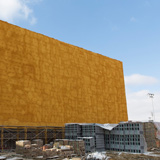
Continuous Insulation: Spray Polyurethane Foam vs. Rigid Foam Board
About the Provider
Icynene-Lapolla is a leader of high performance building material innovations aimed at optimizing the building envelope and maximizing energy efficiency. Available in more than 31 countries, Icynene-Lapolla is a global manufacturer and supplier of spray polyurethane foam for insulation and roofing applications, reflective roof coatings and equipment.
Learning Objectives:
- Identify the characteristics of high performance continuously insulated exterior wall assemblies.
- Compare the characteristics of rigid board insulation with those of medium density spray foam insulation for use in exterior wall assemblies.
- Investigate the use of spray foam insulation to achieve multiple performance traits in one product including thermal, air, and water resistance.
- Assess the ability of spray foam insulation to be installed with fewer steps and at a lesser cost than assemblies using rigid foam insulation.
Provided By:
Design Category:
(07) Thermal and Moisture Protection





